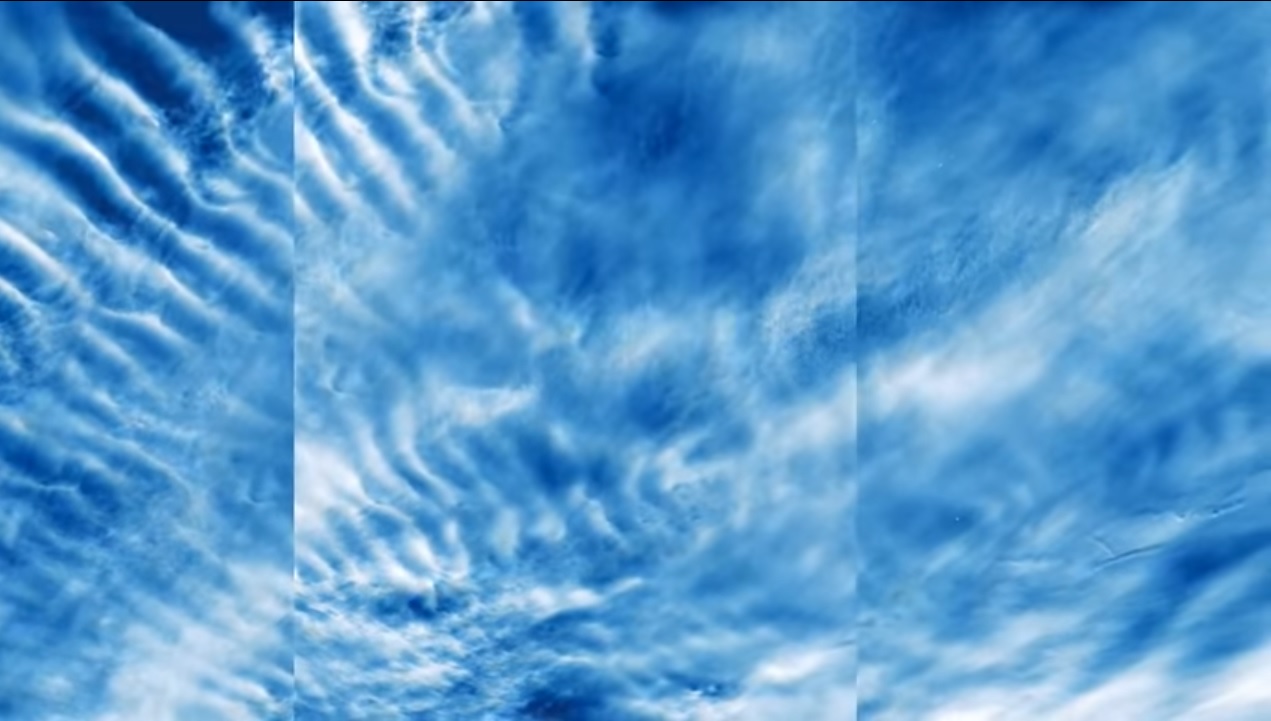NASA Balloon Observes Glowing Blue Clouds in Earth's Upper Atmosphere (Video)
A NASA long-duration balloon mission observed glowing blue clouds that ripple at the edge of Earth's atmosphere. The mission aims to help researchers learn about how energy transfers through the atmosphere's layers.
The phenomenon, called noctilucent clouds or polar mesospheric clouds (PMCs), occurs 50 miles (80 kilometers) above Earth's poles during the summer just after sunset. The clouds form as ice crystals grow on tiny meteor fragments in the region of Earth's atmosphere called the mesosphere. NASA's PMC Turbo mission sent up a huge balloon in July 2018 to study the phenomenon up close and gather information about movement in Earth's atmosphere; the balloon snapped 6 million high-resolution photos as it floated across the Arctic for five days, according to a statement from NASA. The balloon traveled from Sweden to Canada.
"From what we've seen so far, we expect to have a really spectacular data set from this mission," Dave Fritts, principal investigator of the PMC Turbo mission at Global Atmospheric Technologies and Sciences in Boulder, Colorado, said in the statement. "Our cameras were likely able to capture some really interesting events, and we hope [the photos] will provide new insights into these complex dynamics." [Strange Clouds Spotted at the Edge of Space]
The clouds' rippling and flow reflect the movement of air in the upper atmosphere resulting from a phenomenon called atmospheric gravity waves — not to be confused with the gravitational waves created by massive objects colliding in deep space.

Gravity waves are oscillations in the atmosphere that form as air rises or falls and hits obstacles. This can happen when, for example, atmospheric layers bump up against each other or airflow runs into mountain ranges. Atmospheric gravity waves are normally invisible, but can be seen as they flow through noctilucent clouds.
"This is the first time we've been able to visualize the flow of energy from larger gravity waves to smaller flow instabilities and turbulence in the upper atmosphere," Fritts said. "At these altitudes, you can literally see the gravity waves breaking — like ocean waves on the beach — and cascading to turbulence."
The researchers also used a lidar system to measure, for the first time, the precise altitudes of the clouds and variations in temperature above and below the clouds. By watching gravity waves flow through these vivid clouds, scientists can learn more about how turbulence works in the upper atmosphere, as well as in other fluid systems, such as oceans, lakes and atmospheres on other planets, NASA officials said.
Get the Space.com Newsletter
Breaking space news, the latest updates on rocket launches, skywatching events and more!
Email Sarah Lewin at slewin@space.com or follow her @SarahExplains. Follow us @Spacedotcom, Facebook and Google+. Original article on Space.com.
Join our Space Forums to keep talking space on the latest missions, night sky and more! And if you have a news tip, correction or comment, let us know at: community@space.com.

Sarah Lewin started writing for Space.com in June of 2015 as a Staff Writer and became Associate Editor in 2019 . Her work has been featured by Scientific American, IEEE Spectrum, Quanta Magazine, Wired, The Scientist, Science Friday and WGBH's Inside NOVA. Sarah has an MA from NYU's Science, Health and Environmental Reporting Program and an AB in mathematics from Brown University. When not writing, reading or thinking about space, Sarah enjoys musical theatre and mathematical papercraft. She is currently Assistant News Editor at Scientific American. You can follow her on Twitter @SarahExplains.









